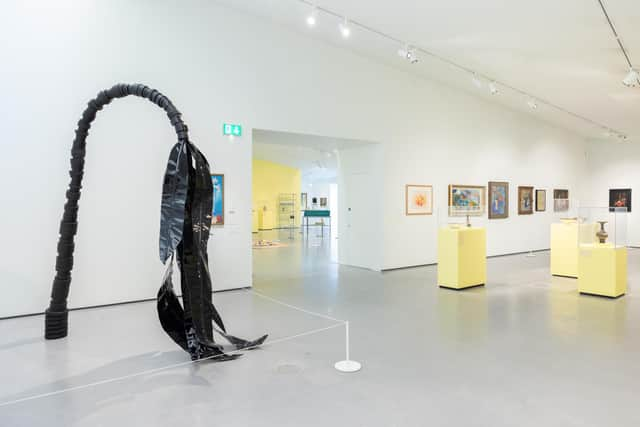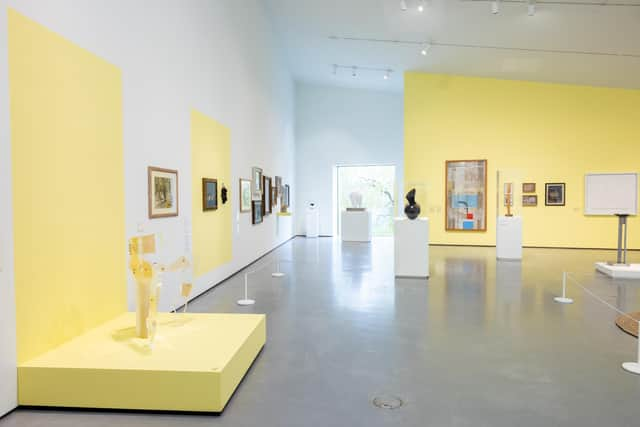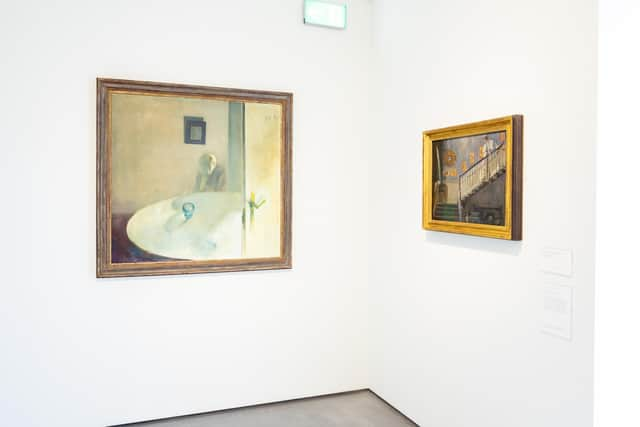Behind the scenes: Installing the Still Lives exhibition at The Hepworth Wakefield
and live on Freeview channel 276
The Express stepped behind the scenes to discover how their latest display – the Still Lives exhibition, comprising over 70 works which depict the still life genre through different art movements – was installed ready for its opening earlier this month.
Registrar Sarah Boyd coordinated the installation, devising ways of displaying the pieces in a way which fulfilled the artists’ wishes whilst maintaining safety for visitors and the artwork itself.
Advertisement
Hide AdAdvertisement
Hide AdSarah said: "Our curator will compile a list of what will be in the exhibition, and then I make sure that firstly, everything is okay to install, that the condition is fine, and that there's nothing that would prevent it from being displayed. Then I create an installation schedule that encompasses the team that we have, the number of technicians, the types of artworks, how complex they are to install – then our team uses that to go wall by wall to install the artwork."


Sarah said a big part of her role is risk management.
“Although I'm doing things like installation schedules and equipment and art shipping, the end goal is to make sure that nothing is damaged and everything is done safely for both the people and the artwork. At the Hepworth our most important thing is to take care of the collection for the city and the public."
Risk management during the installation process often involves controlling the order that pieces are installed. The items with the highest-risk in the Still Lives exhibition are a selection of Barbara Hepworth pieces made from fragile plaster. They were installed last to avoid damage and will be protected throughout the course of the exhibition in vitrines.
Artworks are accompanied by the artist’s installation manual, each with differing levels of detail – some manuals, for instance, fill a whole ring binder with instructions and pictures, whilst others may simply stipulate what the finished display should look like. Sarah must work out how to safely achieve the end goal for how the piece should look.


Advertisement
Hide AdAdvertisement
Hide AdThis could entail simply being aware of how heavy a painting is and whether the wall can bear the weight, but it could also involve – as was the case for Eva Rothschild’s ‘Wandering Palm’ – drilling into the gallery’s cement floor to anchor heavier pieces down.
The ‘Wandering Palm’ piece stands at over two and a half metres tall. The rings around the trunk are moulds made of a fragile material similar to plaster which individually had to be placed around the curved pole which runs through their centre. The work took a day and a half to install, and has barriers surrounding it to prevent visitors from touching it.
Sarah said this is a commonality many contemporary art pieces share.
“The problem with contemporary art is that a lot of it's very tactile – not only kids want to touch stuff, I want to touch it,” she said.


Advertisement
Hide AdAdvertisement
Hide Ad"I think that is one of the challenges with contemporary art – that artists use such unique materials, which a lot of the time has a texture to them or the surface is unique."
Equipment that helps the art technicians ensure the exhibition is meticulously installed to such a high standard includes using laser levellers. These emit a beam onto the relevant wall parallel to the floor, showing the exact level the paintings should be hung.
Soft moving-blankets are used to rest paintings on to avoid them coming into contact with the floor whilst they await being hung on the walls. This not only protects the artwork but also avoids the floor being scratched. Similarly, foam blocks can be used for the same reason to rest paintings on the ground.
Bubble wrap or acid-free tissue paper can be used to protect the artwork when it is transported between art stores and the gallery. This is crucial to ensure the protective material does not discolour the artwork.
Advertisement
Hide AdAdvertisement
Hide AdFarah Dailami was the curatorial assistant for the Still Lives exhibition. Her role included condition-checking all of the works, locating works from the art stores and bringing them up to the gallery, devising an installation timeline, and assisting the curator by writing interpretation labels for the works. As well as this, the curatorial assistant assists the registrar and gallery manager, and helps the art technicians with logistical aspects of the installation process.
Although artworks in an exhibition are selected months in advance, one of the difficulties that can present itself during an installation period is if a piece is found to not be in good enough condition for display once it is brought out of the stores.
Farah said: “That leaves a hole in the exhibition [and] disrupts the display.
"For every work we complete a condition check and report, and look at four key things in different mediums. For a painting you would assess it in terms of: ‘is the paint flaking, are there cracks or scratches?’. It's all determined on how old the work is.
Advertisement
Hide AdAdvertisement
Hide Ad"We have a scale of poor to excellent condition, and we try to keep everything in our collection in excellent condition and get things conserved
and restored."
The Still Lives exhibition will be on display until January 2025.